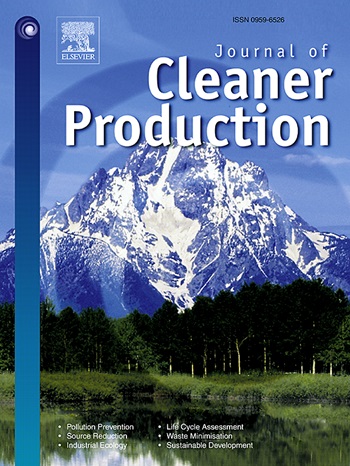Process Intensification and Comparison of Electrolytic Hydrogen Green Steel Plants for Industrial Decarbonization
IF 9.7
1区 环境科学与生态学
Q1 ENGINEERING, ENVIRONMENTAL
引用次数: 0
Abstract
There is a growing interest to produce steel by using a direct reduced iron shaft furnace that reduces iron ore using electrolytic produced hydrogen, followed by an electric arc furnace. This method, called the H2-DRI-EAF steel production pathway is currently being implemented at full-scale with several different designs available and can help play a major role in industrial decarbonization. In this work, three main designs are investigated: the SOE-R Design – a novel design that utilizes solid oxide electrolyzers (SOEs) and recycles steam to keep process temperatures high, the SOE-NR Design – a design that utilizes SOEs without recycling steam, and the PEM/AEL Design – a design that uses proton exchange membrane (PEM) or alkaline liquid electrolysis (AEL) electrolyzers. Also investigated is the use of electric arc furnace off-gases to be combusted to supply process heat prior to the direct reduction iron shaft furnace which is compared through the base (B) and off-gas utilization (OGU) sub-designs. Results show that the SOE-R-B Design can produce steel using 3.56 MWh/tonnes liquid steel, representing a 26.9% and 16.6% reduction of energy compared to the PEM/AEL-B Design and SOE-NR-B Design, respectively. Additionally, the SOE-R-B Design produces 1.20 tonnes CO2e/tonnes liquid steel using E.U. grid electricity, which is lower than current conventional steel pathways. If low carbon grid electricity is used, the SOE-R-OGU Design can produce steel emitting 0.48 tonnes CO2e/tonnes liquid steel. 83% or more of water can be reduced in the SOE-R Design compared to the SOE-NR and PEM/AEL Designs due to not using any water for cooling to condense steam. Lastly, 23.8% – 42.1% of the natural gas used for process heating in a process heating combustion furnace can be reduced when electric arc furnace off-gas is utilized. Overall, a detailed energy, carbon emissions, and water use comparison of three realistic, full-scale electrolytic hydrogen steel plants is presented.工业脱碳用电解氢绿钢装置工艺强化与比较
人们对使用直接还原铁竖炉炼钢越来越感兴趣,这种炉使用电解产生的氢来还原铁矿石,然后是电弧炉。这种方法被称为H2-DRI-EAF钢生产途径,目前正在全面实施几种不同的设计,可以帮助在工业脱碳中发挥重要作用。在这项工作中,研究了三种主要设计:SOE-R设计——一种利用固体氧化物电解槽(soe)和回收蒸汽以保持高工艺温度的新颖设计,SOE-NR设计——一种利用固体氧化物电解槽(soe)而不回收蒸汽的设计,以及PEM/AEL设计——一种使用质子交换膜(PEM)或碱性液体电解(AEL)电解槽的设计。研究了在直接还原铁立炉之前使用电弧炉燃烧烟气提供工艺热量,并通过基础(B)和烟气利用(OGU)的子设计进行了比较。结果表明,SOE-R-B设计可以使用3.56兆瓦时/吨的钢液生产钢,与PEM/AEL-B设计和SOE-NR-B设计相比,分别减少了26.9%和16.6%的能量。此外,SOE-R-B设计在使用欧盟电网的情况下,每吨液态钢产生1.20吨二氧化碳当量,这比目前传统的炼钢途径要低。如果使用低碳电网电力,SOE-R-OGU设计可以生产每吨液态钢排放0.48吨二氧化碳当量的钢。与SOE-NR和PEM/AEL设计相比,SOE-R设计可以减少83%或更多的水,因为它不使用任何水来冷却冷凝蒸汽。最后,利用电弧炉烟气可减少过程加热燃烧炉中用于过程加热的天然气23.8% ~ 42.1%。总体而言,详细的能源,碳排放和水的使用比较三个现实的,全面的电解氢钢厂提出。
本文章由计算机程序翻译,如有差异,请以英文原文为准。
求助全文
约1分钟内获得全文
求助全文
来源期刊

Journal of Cleaner Production
环境科学-工程:环境
CiteScore
20.40
自引率
9.00%
发文量
4720
审稿时长
111 days
期刊介绍:
The Journal of Cleaner Production is an international, transdisciplinary journal that addresses and discusses theoretical and practical Cleaner Production, Environmental, and Sustainability issues. It aims to help societies become more sustainable by focusing on the concept of 'Cleaner Production', which aims at preventing waste production and increasing efficiencies in energy, water, resources, and human capital use. The journal serves as a platform for corporations, governments, education institutions, regions, and societies to engage in discussions and research related to Cleaner Production, environmental, and sustainability practices.
 求助内容:
求助内容: 应助结果提醒方式:
应助结果提醒方式:


